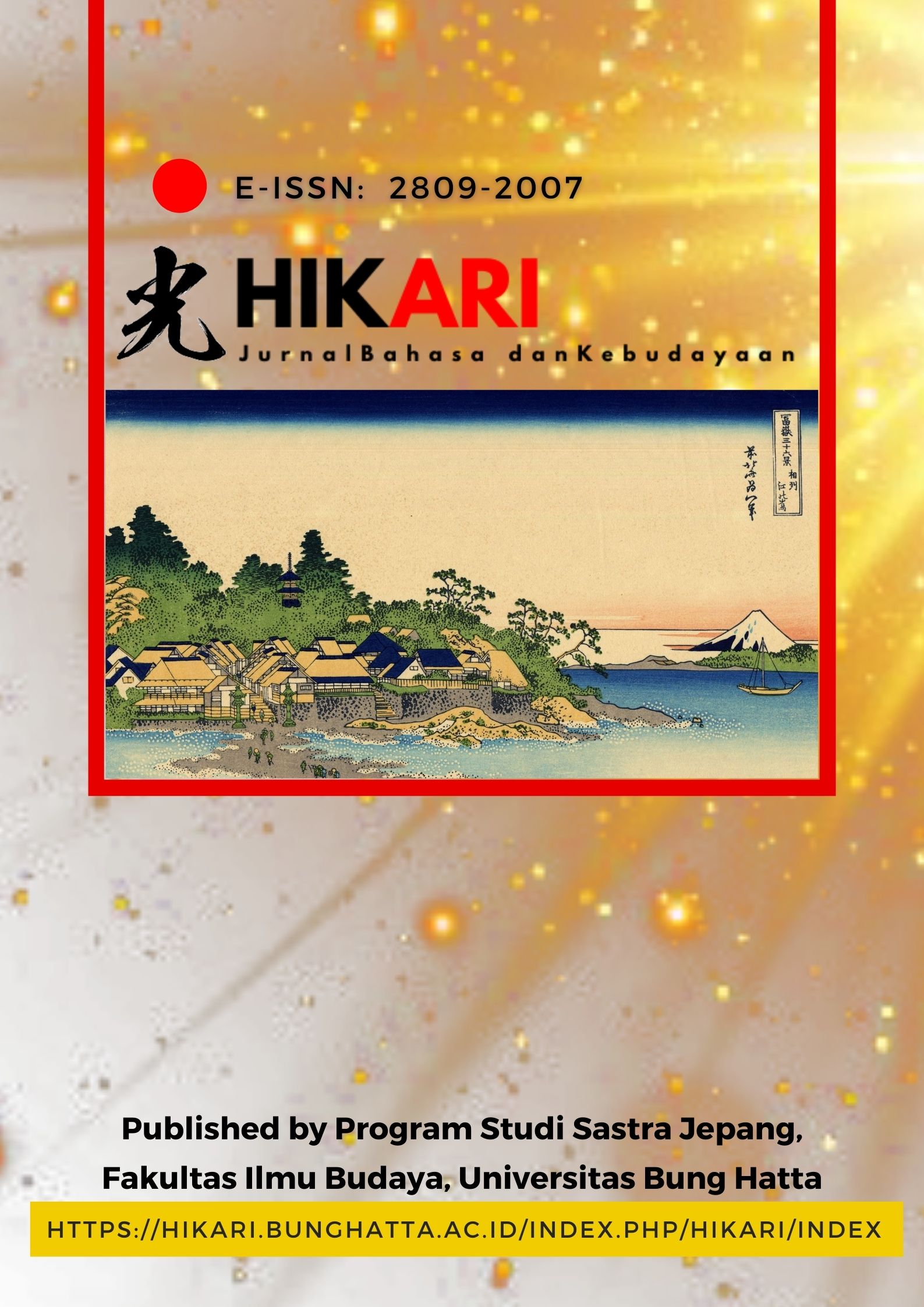GENDER FLUIDITY OF DSD CHARACTERS IN MIZUSHIRO SETONA'S HOUKAGO HOKENSHITSU MANGA
DOI:
https://doi.org/10.37301/hikari.v4i2.57Abstract
This research is entitled "Gender Fluidity of DSD Characters in Mizushiro Setona's Houkago Hokenshitsu Manga". The main focus of this study is on the concept of gender identity fluidity displayed by DSD (Disorder of Sexual Development) characters and their relationship to the issue of freedom. This study was conducted by utilizing references to Gender Fluidity proposed by Erin Calhoun Davis. In general, gender fluidity is understood as the uncertainty of gender identity that arises as a result of the destabilization of the binary gender system. Mizushiro Setona uses literary works as a tool to convey messages that contain social criticism of the injustices experienced by minority groups. The transgender character is used as the main character who seeks to break free from the shackles of social norms. The concept of gender fluidity from Erin Calhoun Davis shows that there is a possibility for gender diversity for individuals because identity formation is a process that never stops and always continues. This concept of gender fluidity is used as a reference in research on DSD individuals. The findings of this study show that DSD individuals face pressure due to external pressures. The pressure comes from gender boundaries that are debated in society. Gender attributes are used by trans individuals to free the body and soul from the shackles of gender norms. Although DSD individuals can achieve freedom through appearance and gender attributes, it is limited to internal aspects.
Keywords: Gender Fluidity, DSD, Manga
References
Artaria, Myrtati D. 2007. Bunga Rampai: Masalah Anak, Gender dan Multikulturalisme (Jenis Kelamin Manusia: Suatu Tinjauan Biologis) Yogyakarta: Ar-ruz Media
Callahan, Gerald N. 2009. Between XX and XY: Intersexuality and the Myth of Two Sexes. Chicago: Chicago Review Press
Davis, Erin Calhoun. 2009. “Situating “Fluidity” (Trans) Gender Identification and the Regulation of Gender Diversity”. Dalam GLQ: A Journal of Lesbian and Gay Studies, Volume 15, Number 1, 2009, pp. 97-130 (Article). Duke University Press
Fitrianingrum, I., Ediati, A., & Faradz, S. M. (2019). Strategi Coping Orangtua yang Mempunyai Anak dengan Disorders ff Sex Development Kromosom Seks Mosaik. Jurnal Psikologi, 17(2), 189-203. https://doi.org/10.14710/jp.17.2.189-203
Hutami, Erinda Ayu. 2017. Gender Fluidity sebagai Isu Kebebasan dalam Novel Pasung Jiwa karya Okky Madasari (Tesis). Universitas Gadjah Mada: Yogyakarta
Japanese Honorifics: Meaning of Kun, San, Chan and More https://en.amazingtalker.com/blog/en/japanese/49212/
Mizushiro, Setona. 2014. Houkago Houkenshitsu Volume 1-10. Tokyo: Akita Shoten
Wieringa, Saskia E. 2010. Keanekaragaman Gender di Asia: Pertarungan Diskursif dan Implikasi Legal. Jurnal Gandrung Vol. 1 No. 2 December. Universitas Diponegoro. Artikel ini pertama kali dipresentasikan pada kuliah umum di University of Rio de Janeiro, 23 September 2008 dan Konferensi Interseks, di Universitas Dipenogoro Semarang, 17-19 Oktober 2008

Downloads
Published
Issue
Section
License
Copyright (c) 2025 Hikari: Jurnal Bahasa dan Kebudayaan

This work is licensed under a Creative Commons Attribution-ShareAlike 4.0 International License.





